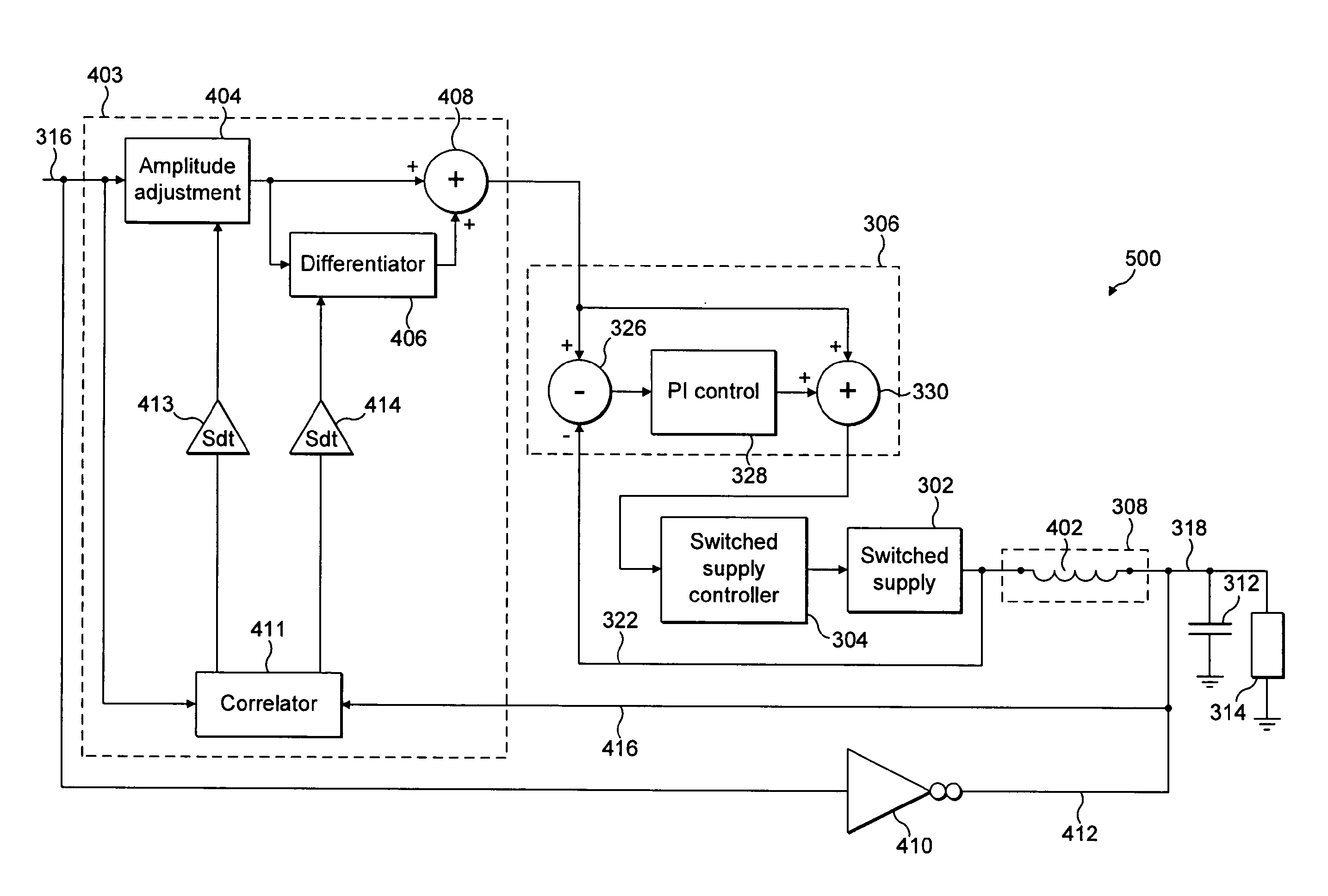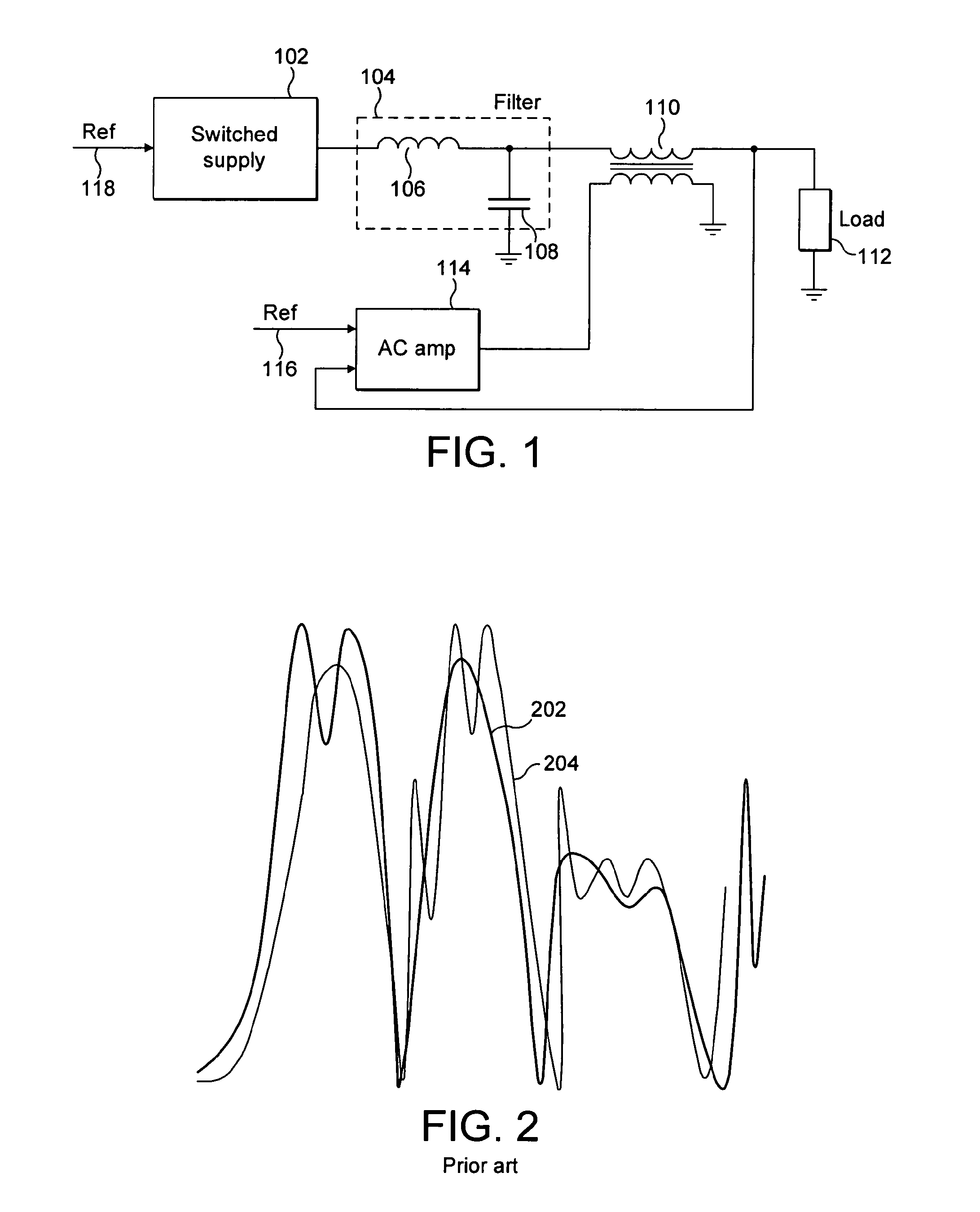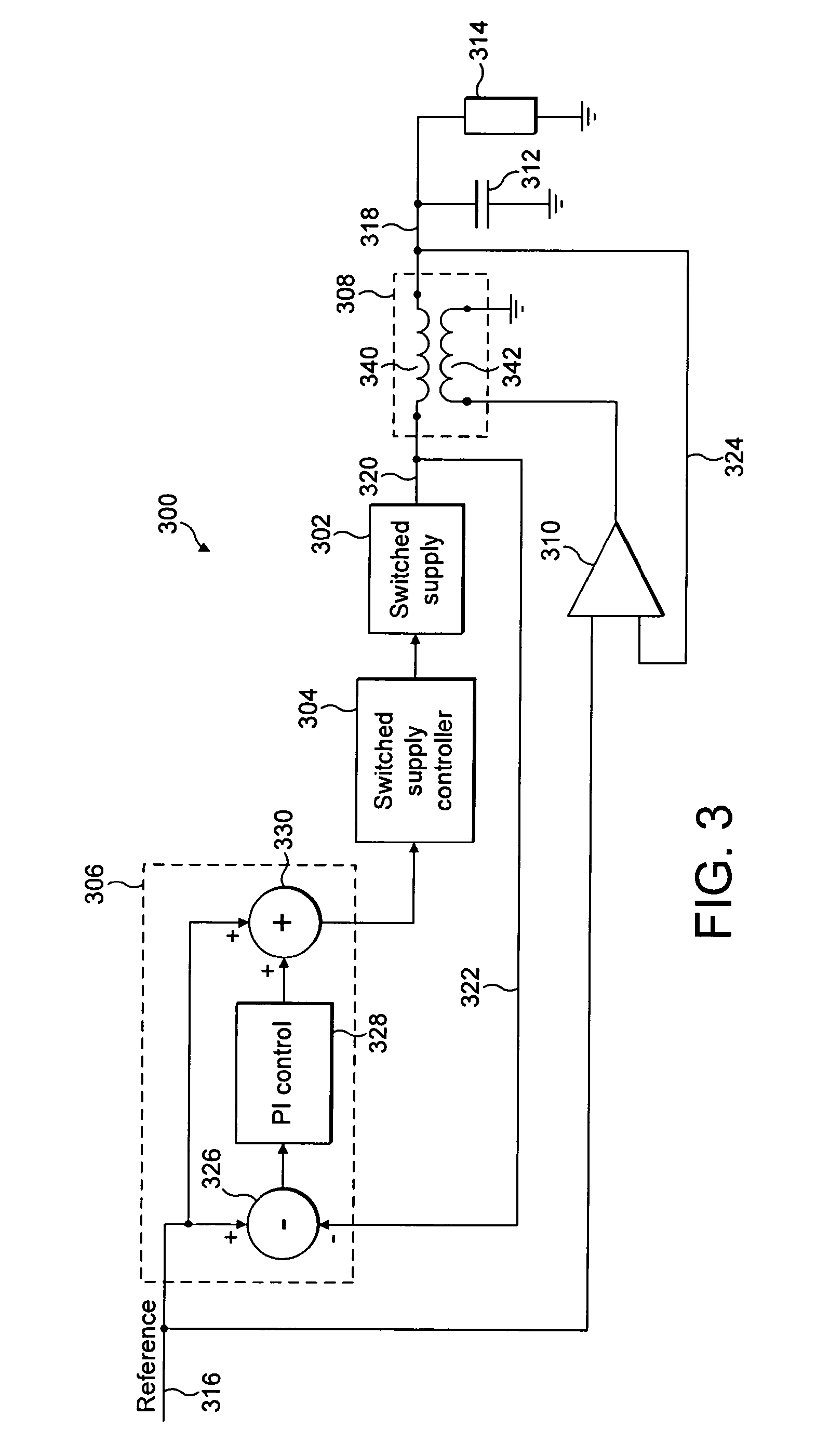Modulated supply stage with feedback to switched supply
a moduled supply and switching supply technology, applied in the direction of electric variable regulation, process and machine control, instruments, etc., can solve the problems of no net gain in efficiency, difficulty in application of these techniques, and difficulty in particular, so as to maximize the current flowing and minimize the current flowing
- Summary
- Abstract
- Description
- Claims
- Application Information
AI Technical Summary
Benefits of technology
Problems solved by technology
Method used
Image
Examples
Embodiment Construction
[0064]The invention will now be described by way of example with reference to its application in various embodiments. One skilled in the art will appreciate that the invention is not limited in its scope to the specifics of implementation details of any particular embodiment.
[0065]The broad principle in accordance with the invention is to provide an additional feedback path. The feedback path provides an input to the switched supply.
[0066]The provision of the feedback path is in accordance with one of two broad embodiments. In a first broad embodiment the feedback path originates from the output of the switched supply, i.e. the output of a coarse path. In a second broad embodiment the feedback path originates from the output of the correction path. Thus the switched supply stage is provided an input derived from an input to the combiner stage for combining the switched supply with the correction signal. This feedback reduces errors at low frequencies, and allows the bandwidth of the...
PUM
 Login to View More
Login to View More Abstract
Description
Claims
Application Information
 Login to View More
Login to View More - R&D
- Intellectual Property
- Life Sciences
- Materials
- Tech Scout
- Unparalleled Data Quality
- Higher Quality Content
- 60% Fewer Hallucinations
Browse by: Latest US Patents, China's latest patents, Technical Efficacy Thesaurus, Application Domain, Technology Topic, Popular Technical Reports.
© 2025 PatSnap. All rights reserved.Legal|Privacy policy|Modern Slavery Act Transparency Statement|Sitemap|About US| Contact US: help@patsnap.com



